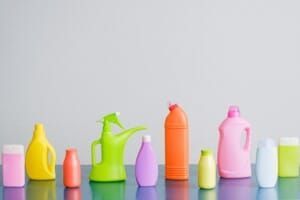4 Sustainably Conscious Ways to Clean Your Store

We all know that green cleaning is the new black, but how can you get on board with this new trend in your cleaning routine? You can’t just turn on the tap and fill your store with verdant germ-free goodness. There are a lot of factors that need to be taken into account, especially when it comes to the
sustainability of your store
and its customers. So, how can you incorporate green cleaning into your store with minimal impact? Here are four sustainable ways to clean your store.
Use natural ingredients when cleaning.
To integrate the sustainable trend of green cleaning into your store , the first thing that you need to do is make sure that you don’t use harsh chemicals when cleaning. Natural ingredients are great for cleaning your store, but you need to use them responsibly. You can use essential oils to clean and solutions that include citronella, lemongrass, and lavender. Natural cleaning products don’t damage the environment because they are made from renewable resources. Natural ingredients can also help you create a more sustainable store and a more pleasant experience for your customers.
You can take this a step further by using a steam cleaner where possible as the steam acts as the cleaner for a more hygienic and eco-friendly cleaning option.
Hire a cleaning company
Some cleaning companies provide eco-friendly cleaning services, and others are certified in sustainable cleaning. When hiring a cleaning company, ask about their cleaning methods and what ingredients are being used. Some Commercial Cleaning companies will work with you to help carry out their services sustainably to help support the changes you want to make.
Clean when the store is open where possible
When the store is open, you are already using energy to keep the lights on, serve customers, etc. Keeping these on when the store closes increases your energy consumption, not to mention adds to your wage bill.
If you clean as much as possible when the store is open, you can use the energy when required and avoid keeping the lights on past close. Also, training employees to clean as they go means you can catch issues quicker and potentially reduce the chance of you needing to use harsh chemicals or more products to remove the mess after some time. In many cases, regular cleaning can be done with a damp cloth or rag for spills on the floor if caught quickly, saving products for more significant problems.
Recycle materials where possible
Avoid using single-use products when cleaning , such as wipes, and invest in tools that can be used repeatedly. Or even recycle one product to use as something else when it is no longer functional. E.g., using damaged uniforms to clean or wipe down surfaces if they can no longer be worn, using damaged food items like cleaning materials such as lemons or white vinegar, and even using old packaging, empty containers, and products for storage instead of buying new ones.
Alternatively, ensure you have a robust recycling process in place, and everyone adheres to this as much as possible to ensure you are reducing your waste and carbon footprint.


